
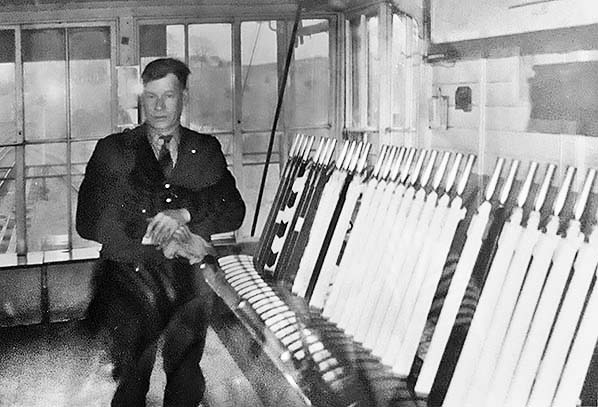
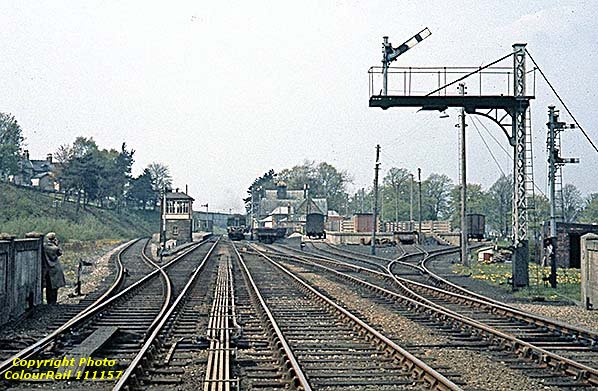
This superb westward view of Cockermouth station in May 1960 includes the cattle sidings and loading dock. By this date the down side sidings serving the carriage and engine sheds left of the island platform have been removed. At the station is a DMU bound for Keswick and Penrith, the signal in the foreground giving permission for the train to proceed,
Photo copyright ColourRail  In May 1960 a ‘Derby Lightweight’ DMU is departing from the down platform at Cockermouth station on its way to Workington. It is wearing the current ‘whiskers’ design below the cab. Of note are the BR(LM) running-in nameboard on the up platform and the LMS ‘Sugg’ gas lamp mounted on what is probably a CK&P standard painted in BR(LM) colours.
Photo copyright ColourRail 
The elegant entrance to Cockermouth station is shown on this undated photograph. The doorway is flanked by lancet windows. Shelter is provided by the double-hipped glazed canopy. Until LMS days a similar canopy was in place above the entrance to Keswick station.
Photo from Roy Anderson collection 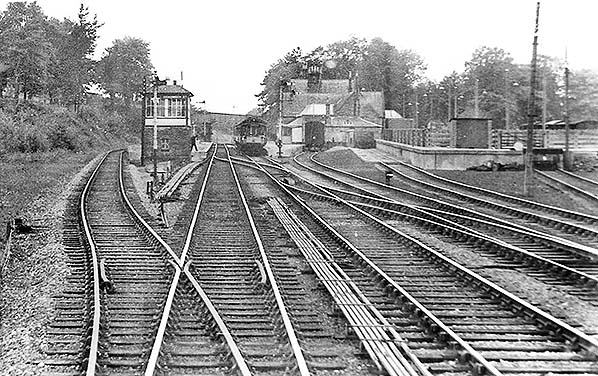 Looking west at Cockermouth station in August 1962. The DMU at the up platform displays the solid (yellow) warning panel beneath the cab windows, replacing the short-lived ‘whiskers’ seen on the 1960 photos. The cattle dock and pens to the right of the passenger station are shown to advantage. The town still has an important livestock mart in 2019. Looking west at Cockermouth station in August 1962. The DMU at the up platform displays the solid (yellow) warning panel beneath the cab windows, replacing the short-lived ‘whiskers’ seen on the 1960 photos. The cattle dock and pens to the right of the passenger station are shown to advantage. The town still has an important livestock mart in 2019.Photo from John Mann collection  Ivatt class 2MT 2-6-0 No 4632 is seen in the down platform at Cockermouth c1964. This loco was a resident at 12D Workington shed for seven years and is seen in many of the photos here. After leaving Workington the loco went to the Springs branch shed, Wigan, from where it was eventually withdrawn.
in May 1967. Photo from Robin Barbour collection courtesy of Bruce McCartney 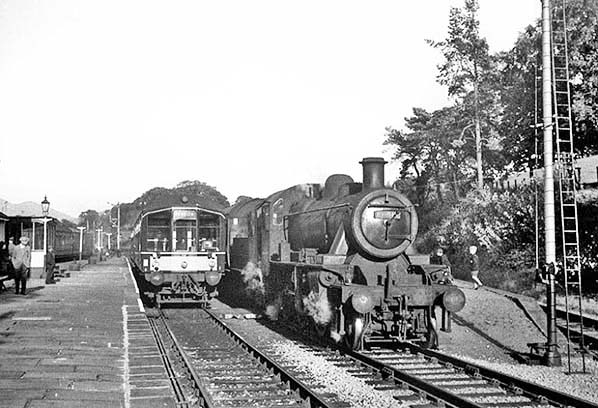
Some sources state that services on this line were taken over by DMUs in 1955. In fact DMUs and steam worked side by side, Workington and Upperby sheds having mixed rosters. This remained the case until closure of the Keswick - Workington section. In this view a ‘Derby Lightweight’ 79xxx series DMU bound for Penrith waits on the up platform. On the down platform an Ivatt 2MT 2-6-0 hauls the ‘Lakes Express’. The ‘Lakes Express’ was started by the LMS as a summer-only service from Euston to a host of destinations in the north-west that were served by portions detached along the way, and delivered to their destinations by smaller locos; these portions operated to Keswick/Workington, Windermere, Whitehaven, Morecambe and Blackpool. This picture dates from the last two years of service.
Photo from James Lake collection  Looking east along the down platform at Cockermouth station in the mid 1960s. By this time the station no longer handled livestock and condemned coaches are now stored in the up sidings. The three nearest the camera are Stanier Period III coaches in lined maroon livery. They were main line stock. The next two are Period II local stock in very faded Crimson Lake livery. The final vehicle is an ex LMS Full Brake, i.e. a van with brake compartment. Period III main line stock continued to be built in BR days, until c1951. Some survived long enough to receive BR blue and grey livery. It will be noted that casement-style gas lanterns survived alongside the more recent ‘Sugg’ design.
Photo from Duncan Chandler collection from his Flickr photostream 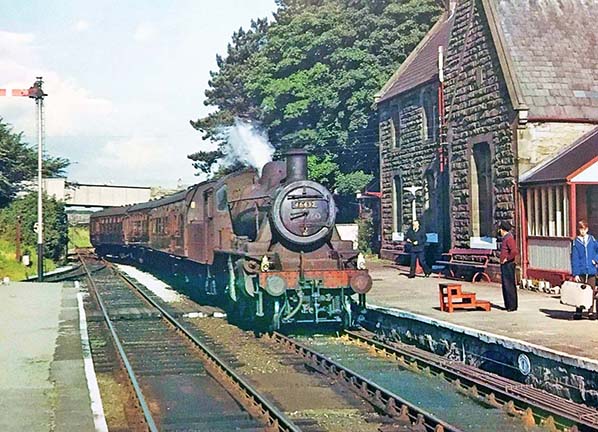 Another view of No.46432 pulling into Cockermouth with the Workington and Keswick portion of the Lakes Express which will eventually run on to Euston. When photographed she had recently worked a special as there is a headcode chalked on the smokebox door. The train is one of the fixed formation sets used in the line and comprises a BR MkI brake end, an ex-LMS Stanier vehicle and another BR MkI brake end. Of interest is the bridge plate attached to the platform face on the right. I bears the number '1' and no doubt indicated Bridge No.1 of the CK&P section following opening of
the through station. Note the wooden steps on the platform. Steps were used to assist loading and unloading of parcels etc from the guard's van. All passenger trains had a stepboard beneath each door and in those days people made little fuss about having to clamber up and down but if required there was a second steps on each platform for passenger use. Photo from James Lake collection 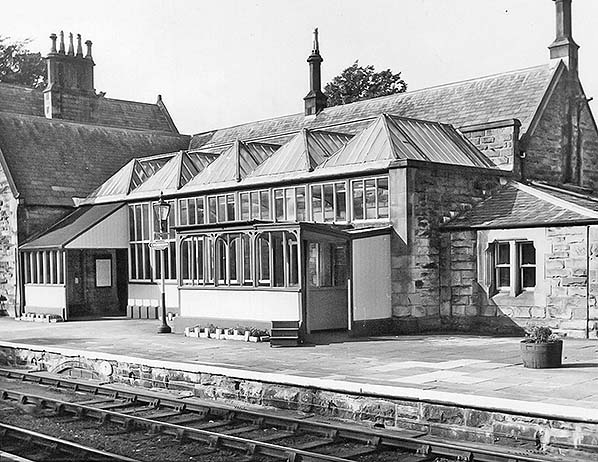 The attractive passenger facilities on the up side at Cockermouth station in the early 1960s. On the far left is the stationmaster's house with the single-storey office contiguous with the house. Beyond this are the booking hall, waiting rooms and porters’ room on the right. Although no platform canopy was provided, a highly attractive and most distinctive shelter in timber and glass fronted the station building, recessed behind the gable of the office. The shelter was lit by eight arched windows and the five hipped, glazed gables of its roof. Protruding into the platform at the west end of the shelter is an entrance to the booking hall and to the left steps lead down to the subway. Photo from Russell Barnes collection 
The subway connecting the up and down (island) platforms is seen in April 1966.
Photo by D Jenkinson Click here for Cockermouth Station Gallery 4:
|


 Home Page
Home Page